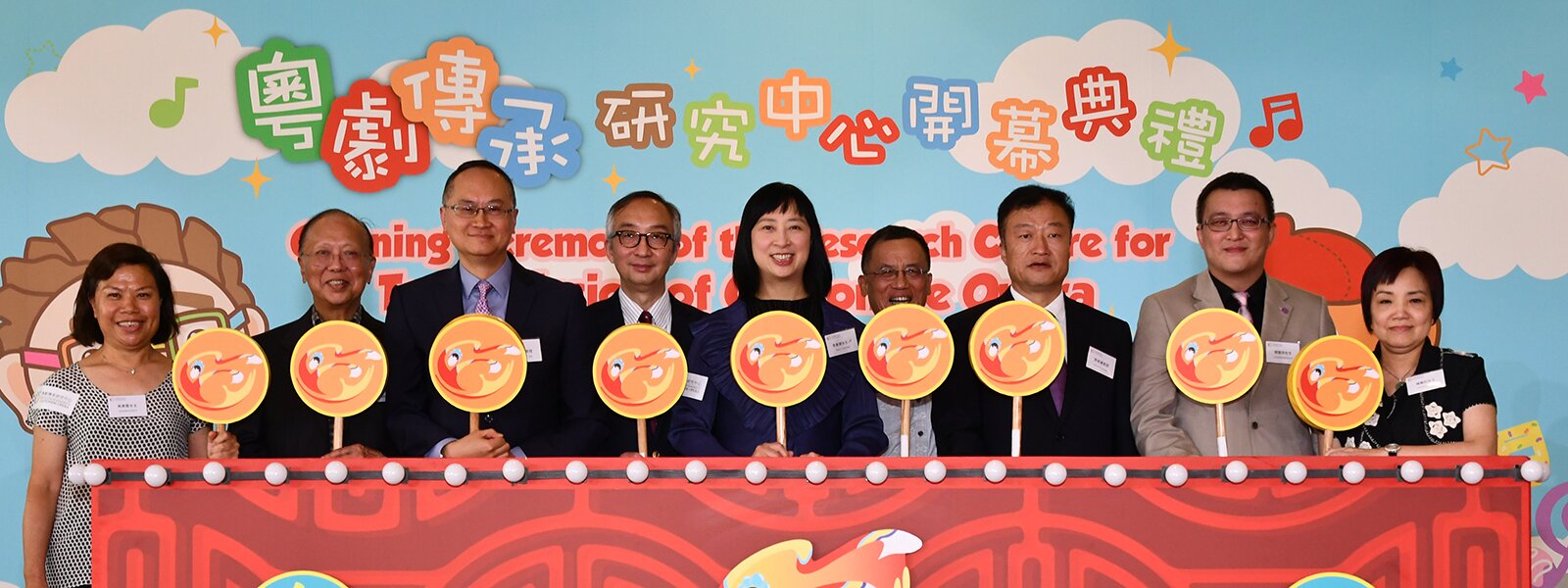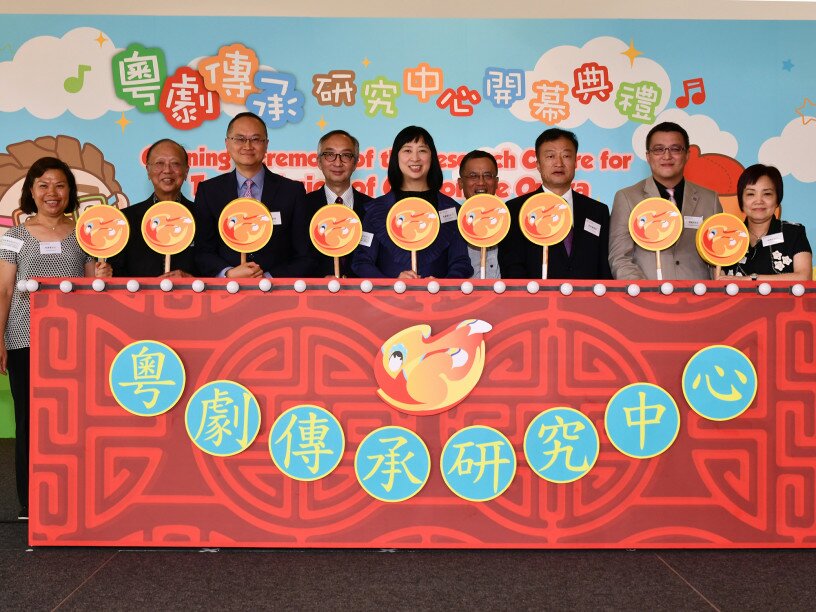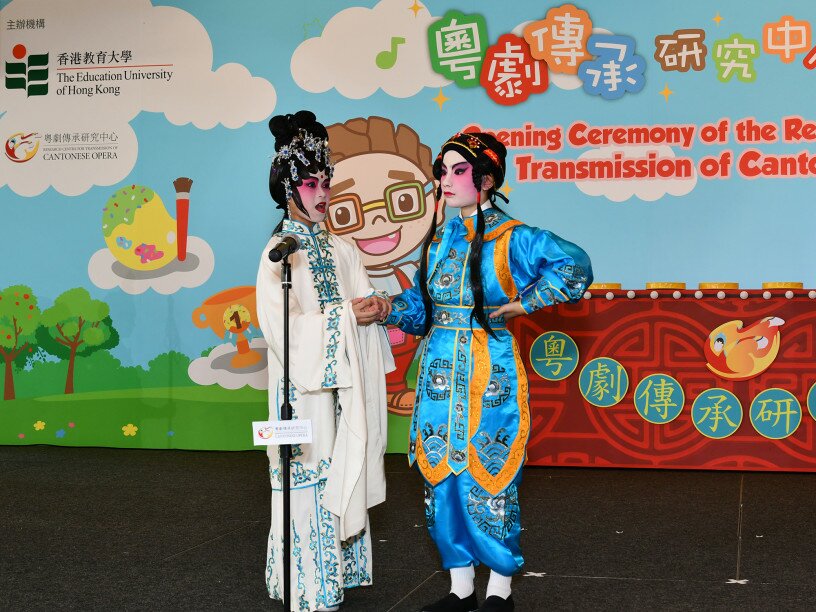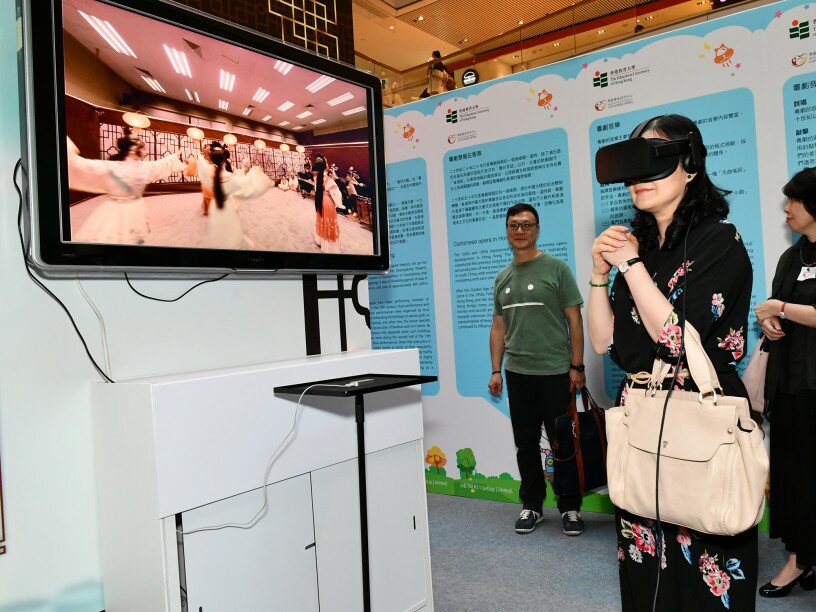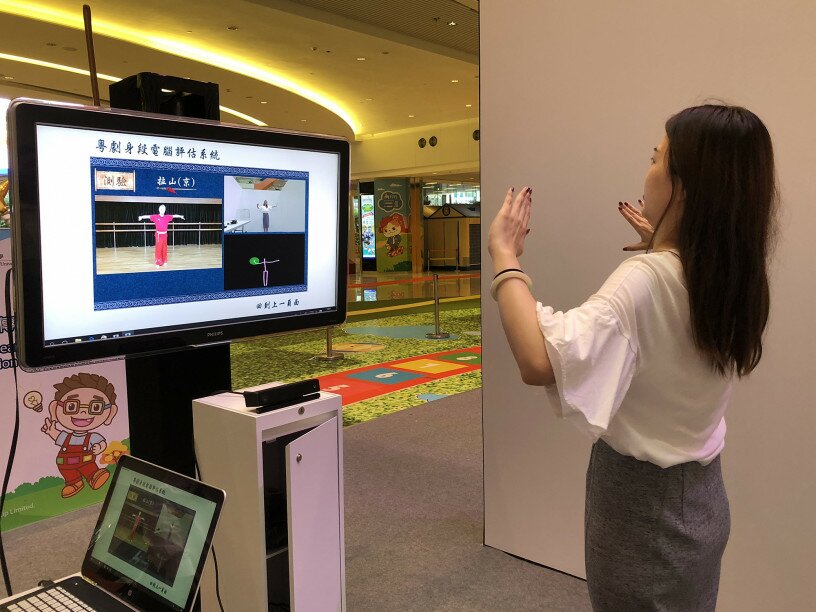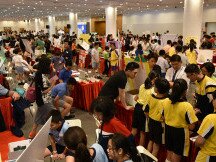Official Launch of RCTCO at EdUHK
Official Launch of RCTCO at EdUHK
To mark the establishment of EdUHK’s Research Centre for Transmission of Cantonese Opera (RCTCO), the opening ceremony was held today (18 May), presided over by Ms Michelle Li Mei-sheung, Director of Leisure and Cultural Services, the Government of Hong Kong SAR; Professor Lui Tai-lok, Vice President (Research and Development) of EdUHK; and Professor Leung Bo-wah, Centre Director of the RCTCO. Following the opening ceremony, a 10-day inaugural exhibition will be held to showcase the University’s latest innovations: the 3D Computerised Kinetic Chain Assessment and Learning System (CKCALS), and Experiencing Cantonese Opera through VR.
Directed by Professor Leung Bo-wah, Head of the Department of Cultural and Creative Arts, the RCTCO aims to develop its local and international standing as a significant player in the field. It is devoted to innovating and enhancing the promotion and knowledge transfer of Cantonese Opera culture through conducting research, utilising new technologies, and providing a bridge between Cantonese Opera artists and schools.
Developed jointly by Professor Leung Bo-wah, Professor Magdalena Mok Mo-ching, Director of Assessment Research Centre, Professor Kuo Boh-chen from National Taichung University of Education, Taiwan, the CKCALS is a grading and review system supported by a Kinetic 3D movement sensor, in which the movements of renowned Cantonese Opera performer and EdUHK Honourary Fellow Mr Yuen Siu-fai are recorded. Classified into beginner, intermediate and advanced levels, six recorded movements, including ‘bow-and-arrow steps’, ‘seven-star steps’ and ‘mount a horse’, are displayed on the computer screen for learners to practise. Through recording, replaying and evaluating the learners’ movements, the system encourages learners to improve and perfect their performance by comparing their movements with those of an expert. In addition, a VR installation developed by Dr Lee Cheng of the RCTCO, featuring “The Dream of the West Chamber” (《西樓錯夢》), invites participants to experience the Cantonese Opera classic as its protagonist.
Vice President (Research and Development) of EdUHK Professor Lui Tai-lok said, “Committed to the Education-plus vision, EdUHK strives to achieve diversity through creating a cross-disciplinary learning environment. The establishment of the RCTCO embodies a big step in promoting knowledge transfer and sharing the fruition of our research efforts with different social sectors.”
Speaking of learning and teaching Cantonese Opera, Director Professor Leung Bo-wah said, “In the long run, we hope to modernise and systemise the learning and teaching of Cantonese Opera, turning it into a widely recognised education model. We believe regular Cantonese Opera public events that feature the latest technologies and vibrant activities at the RCTCO will enliven Cantonese Opera, allowing it to regain its popularity as an important part of our cultural heritage to be passed on to future generations.”
Cantonese Opera guru Mr Yuen Siu-fai said, “Back when we had face-to-face apprenticeships, masters would correct learners on the spot. By making it possible for learners to review and correct their movements following the recordings, the CKCALS is a pioneering project that standardises the learning, teaching and evaluation process of Cantonese Opera.”
Collectibles are also exhibited to raise the awareness of the general public regarding the Cantonese Opera culture. Among them is the exhibit “Chinese and Western Music Notations for Singing with Strings” (《絃歌中西合譜》), edited by prolific composer Mr Sham Wan-sing in 1929. It details invaluable information illustrating the style and early development of Cantonese Opera, including the lyrics and notations of several Cantonese Opera classics. Another time-honoured exhibit is “Pak Suet Wei Yum” (《白雪遺音》), which features the notations of “The Romantic Monk” (《情僧偷到瀟湘館》), which debuted in 1947. Inscriptions of famous Cantonese Opera professionals and illustrated instructions on related instruments are other items on display of great appreciation and research value.
Interactive experiences are another highlight of the exhibition. "Kneeling by the Pond", the best-known excerpt in the Cantonese Opera “The Lion's Roar” (《獅吼記》), comes alive as a 3D painting, along with a replica of a Cantonese Opera backstage. A series of meticulously composed Fotomo models inspired by “The Phoenix Pavilion” (《鳳儀亭》) and “Dream of Yang Guifei” (《夢會楊貴妃》) depict mesmerising scenes. Visitors are also welcome to create their own fan paintings at the exhibition.
The event details are as follows:
| Date: | 18-27 May 2018 |
| Venue: | L1 Atrium, D·PARK, 398 Castle Peak Rd, Tsuen Wan |
| Time: | Exhibition: 18/5-27/5, 1200-1900 (Mon to Fri), 1100-2000 (Sat & Sun) |




